A Complete Guide to The Use of Social Media in E-Commerce
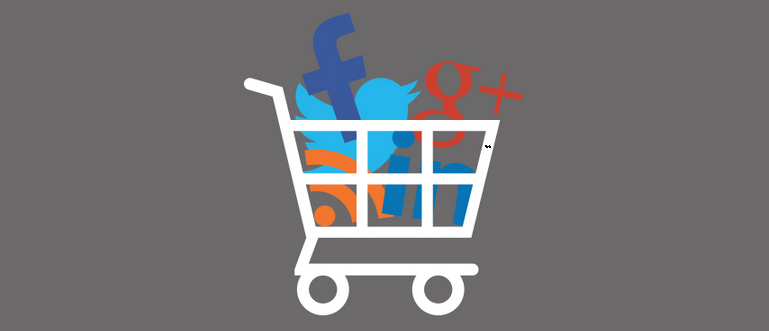
This is the most comprehensive guide to the use of social media in e-commerce. You probably know, that social networks play an important role in online trade, but how broad is your understanding? What social media strategy should you choose to increase your website traffic? How to implement successful social media campaign to double sales? In the post below we will help you answer this questions.
UPD (17.06.15): Real Time Social Experience with Periscope and Meerkat

Table of contents
Introduction to Social Media in E-Commerce
By utilizing new technologies, e-commerce brings lots of new opportunities to business. At the same time, it faces some core problems of brick-and-mortar trade. E-commerce merchants still have to find potential buyers, accept payments from them, and deliver goods or services to them, but they do it in an unconventional way, for example by utilizing social networking services of skipping some parts of this process due to innovative models like ghost commerce.
The role of social media in e-commerce is constantly growing. There is even a subset of electronic commerce called social commerce, which involves using social media to assist in the overall growth of digital sales. Social commerce employs such aspects of social networks as ratings, reviews, recommendations, referrals, and communities. It also relies on social media optimization, social advertising and social apps. Below, you will find some mind-blowing stats, which illustrate the importance of e-commerce and social media in modern trade.
Mind-Blowing E-Commerce Stats
-
15% of 13+ years students with tablets have done online purchases in school.
-
71% of social media users show more trust to brands they follow online. Thus, they are more likely to buy their goods and services.
-
95% of tablet users shop online at home.
-
59% of households with $200,000+ of annual income perform mobile purchases in-store.
-
52% of US customers purchase brands online.
-
58% of US department web stores support mobile devices.
All this numbers already show the significance of e-commerce, but they are constantly changing. Due to positive dynamics, specialist predict, that in 2015 the volume of m-commerce will outdo ecommerce – the volume of m-commerce transactions will reach $4.5 trillion; a half of web sales will be done with the participation of social networks; Facebook will get 6.1% of e-commerce market; China will be the leading e-commerce market. But that’s just a tip of the iceberg, more exciting facts and guesses are below.
Social network as a fat wallet
Can you imagine, that your Facebook page is merged with your online banking account? Not really? Well, we are talking about the recent future. Hackers insist that Facebook’s Messenger includes deeply hidden payment features. Imagine, that you can send money to one of 200+ million users from the application or even your account in a browser. Let’s say, for comprehensive fee or even for free. It is a very convenient way for transactions.
Customers will love this new feature, but much more important is the opportunity for e-commerce. Online merchants will utilize Facebook to sell more through this social network. They will be even able to use it as their major selling platform. It’s obvious, that other networks will offer their alternatives to the new payment feature. Meanwhile, Facebook already provides its customers with the ability to save their credit card information on account. The feature is called Autofill and it supports shopping within 450,000 e-commerce stores across the web.
Snapcash on Snapchat is another tool for peer-to-peer money exchange. Thus, you can see, that payments through a native social media apps become more and more common. Brands and buyers get a direct payment connection between each other, and the traditional credit card merchant transaction fee is eliminated.
New era of ghost towns
Some modern social networks look like abandoned cities: they consists of thousands of profiles, but visitors newer come back. This looks like abandoned apartments of Oradour-sur-Glane. Some of the existing platforms promise to never sell user data, while the others allows to communicate with people who are physically nearby, but how long will they last?
It’s impossible to provide the answer to this question due to different reasons, but it’s obvious, that they will NEVER get the popularity of Facebook or Twitter, and in nearest future we will see absolutely abandoned social networks.
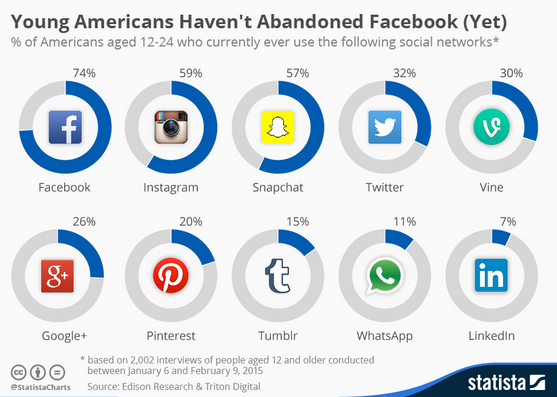
At the same time, there are lots of new social networks gathered around tight communities, like cooks, chefs, and fitness junkies. They have all chances to survive.
Homebody-Shopaholics
Witness the new type of consumer – homebody-shopaholic. He or she likes shopping, but hates staying outside of a cozy apartment. We already see thousands of such people among Asos visitors. But homebody-shopaholics have all chances to accept lots of new adepts due to future improvements to social networks.
Both Facebook and Twitter introduced a new beta feature – “Buy” buttons. Such buttons appear alongside tweets or posts and provides users with the ability to make purchases within several clicks. In combination with Autofill and new unnamed feature reported by hackers these improvements will make a revolution in e-commerce!
Homebody-shopaholics will be able to participate in their favourite pastime right in their native social network. They won’t even have to go out of its ranges to complete the purchase.

Cheap smartphones and constant internet connection changed the e-commerce market forever. As mentioned above, m-commerce will outdo e-commerce during this year. Thus, online retailers have to adapt to the new conditions. Even Google with its Mobilegeddon stimulates ecommerce web site owners to accept new changes faster.
Considering the obvious industry shift and the core nature of social networking services on mobile devices (customers is always online or somewhere nearby), we can speak about the increasing role of social networks in both e-commerce and m-commerce. Moreover, smartphones and tablets are only the most obvious part of this structural change. Everything from home appliances to all possible wearables is responsible for tons of big data. Of course, this information is not always related to social networking, but it provides impact on online retail. At the same time smartwatches are utilized to inform their owners about different events in social networks. Thus, they will be integrated into e-commerce as soon as possible. Some of them are already used in the process of online bidding or even purchasing. Check our post about Wearables and e-commerce for a better insight.
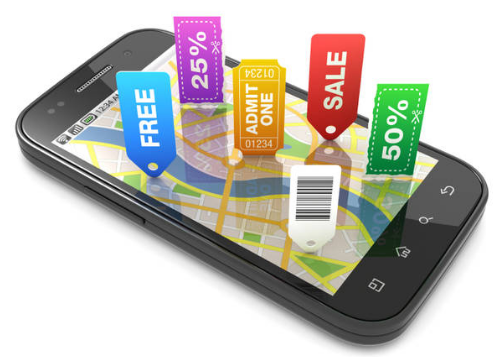
It is also necessary to mention, that more and more devices become smart enough to integrate with each others. Unfortunately, the fast-growing Internet of Things is not integrated with social media, but it’s just a matter of time. Imagine a smart fridge that monitors events on your social network to purchase food for special events. M-customer is always social, and opportunities of using smart devices in e-commerce are really great.
The popularity of smartphones and integration of geo-location technologies are two core reasons of SoLoMo concept success. This new trend is about providing customers with greater local precision to search results on smartphones and tablets than on PC. It’s extremely important for local businesses and small to mid-sized companies, but SoLoMo can be also utilized by big companies.
The most popular example of the concept is FourSquare with it’s ability to send notifications to users who come under a specific geographical location. The feature exists since 2013, but its importance for the e-commerce businesses is growing. Of course, you won’t be able to utilize SoLoMo without being represented offline.
The new era of privacy
2014 became a year of anonymous social networks and social apps. Users need privacy and during 2015 their requirements will become more strict. But there is one huge problem. In our post about web ecommerce design trends of 2015 we wrote about personalisation as a key trend. Unfortunately, personalisation of e-commerce and privacy of social networks are incompatible.
Thus, their wise utilization within one system will be among core challenges for online merchants and e-commerce web designers. Demand for anonymous social media will simultaneously rise with the need for personalised offers. We will likely see solutions similar to normal and incognito modes in browser.
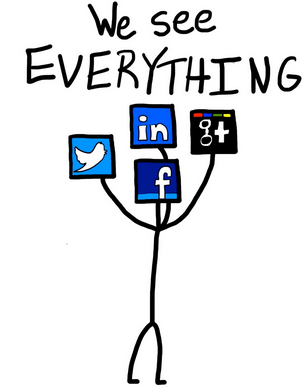
Meanwhile, Facebook has already provided the official support for Tor. It’s users will get extra safety, but Facebook will still know everything about their social life with all possible consequences and opportunities for e-commerce.
Visual content as a weapon
Take an average e-commerce company or brand with regularly updated pages on Facebook & Twitter. We are sure you will notice the importance of visual content. It occupies the most part of the company’s feed in order to prompt visitors to click through and influence their purchase behaviour.
Without any doubt, visual content became a core weapon for e-commerce businesses in their attempts to conquer social networks. According to SEOmoz, posts that contain video materials attract three times more inbound links than posts with plain text only. In fact feed with lots of high quality visual content provides a significant increase in engagement.
That’s why Instagram and Tumblr are often used by e-commerce companies in addition to Facebook and Twitter. This social networks were developed with visual content in mind. Thus, they are ideal for the implementation of visual content marketing strategies.
Is paid content advertising a fraud or not?
It’s quite difficult to reach customers when all your competitors post tons of high quality content. Sometimes it’s not enough to create a catchy tutorial or a funny video. Therefore, some e-commerce merchants rely on paid social posts and placements across multiple channels. There are companies like SponsoredTweets.com and Ad.ly which pay experts and celebrities to share different content on behalf of advertisers. If you provide a high quality content, you will gain enhanced customer engagement and improved sales. If your content is uncompetitive, you will just waste your money. Is paid content advertising a fraud? Of course not. It’s just another way to reach your customers.
How to Utilize Social Networks in E-Commerce
As you can see, social media plays a significant role in e-commerce. There are hundreds of different use cases for social networks in online business. Quite likely you don’t know some small but at the same time important nuances of ecommerce social media marketing, so you can check and improve your knowledge with the help of the below material.
Start with:
-
Clarifying your campaign’s objectives: increased traffic, engagement, clicks, etc.
-
Choosing the type of your campaign: you can use ads (boosted organic ads for everyone; specific promoted ads aimed at certain user group), share a brilliant content, or combine both approaches.
-
Defining your target audience. Luckily, social media provides tons of information about users. Use this data wisely to find your customers and create approach to uninterested ones.
-
Planning your budget. Set a total monthly budget and calculate a daily budget.
-
Designing your ad (if social media advertising is necessary for your SMM campaign). Now, when you know your objectives, understand the specific features of your audience, and know your budget, you can create your ads. Note, that different social networks has different requirements for the content of ads, such as image size and resolution, or number of characters.
-
Analyzing campaign’s results. By analyzing the results of your campaign, you will be able to enhance its future productivity by making improvements and fixes. It is extremely important to learn from your mistakes and utilize all past experience. Always try to find answers to the following questions:
- Did you get the expected results?
- What is the ROI of your campaign?
- How did conversion rate change?
- What was the mistakes?
- How could you improve the campaign?
More tips:
-
Always be on. Note that a quick response can turn your visitor into a buyer. If you are always on and create lots of useful and engaging content, your audience among social network users will constantly grow.
-
Think shopping first. Socializing is the main reason people spend their time in social networking services. Therefore, you should pay your attention to making shopping better with the help of these services. Sometimes it is enough to add social sharing buttons and enable customer reviews in order to gain maximum profit from social networks. At least, these are core requirements for every e-commerce store. At the same time you can build social media into every aspect of your e-commerce website. Provide your customers with the ability to use their social network profiles everywhere from login to sale funnel.
-
Combine social media strategy with other marketing strategies. You can always enhance your email marketing template with the help of social sharing options. Moreover, think about utilizing your social media connections to engage your customers subscribing to the mailing list. And don’t forget about Google+ and its influence on search results.
-
Avoid self-serving. Rely on 80/20 ratio, where 20% is your promotional content, and 80% is content that really interests your customers.
-
Reward your social followers. Provide them with exclusive offers, bonuses, and discounts. Do you love to feel special? Of course, you do, so why should your customers be different?
Social media marketing strategy and visual content
-
Create eye-catching visual content.
-
Include infographics and video content into your social media campaign.
-
Run video ads with good CTAs.
SMM and SoLoMo
-
Rely on real time engagement to get loyal and highly-active customers.
-
Utilize both offline and online marketing data to track individual and collaborative performance.
-
Reach people with the help of mobile version of your ads (especially Facebook ads).
-
Use local awareness ads.
-
Try to increase conversions and decrease CPA – get the lowest possible cost per acquisition.
-
Rely on advanced data insights and social media marketing analysis in a combination with ROI-driven advertising.
New platforms
-
Don’t limit your SMM campaign to Facebook and Twitter only.
-
Explore your traffic in order to understand where your audience hangs out.
-
Learn preferences and tastes of your target audience.
-
Don’t try to conquer all social networking services.
-
Figure out new social ad channels.
-
Allocate budget wisely and reduce wasted ad spends.
-
Try to avoid using outdated social media tactics.
-
Experiment with new platforms and approaches.
PPC (pay-per-click) campaign
-
Cost-per-click or CPC options are always better than cost-per-mille or CPM options. Don’t pay for vor viewers – pay for their actions, especially if your goal is to capture leads.
-
Your ads should have URLs with unique tracking token. This will help you test them in order to see their effectiveness. Without this information you will never optimize your ROI.
-
The writing style of your landing page and an ad in a social media should be similar. At least, try to use the same language. Otherwise, you’ll confuse your customers.
-
Provide high-quality content: avoid typos (if they are not a part of your creative ad), use images of proper sizes, check if every URL goes to the right landing page.
-
Use A/B testing and test different types of ads. This will help you choose better options and get the most from your PPC campaign.
Growth Hacking
Don’t forget to check our post about Growth Hacking. This relatively new approach can be easily utilized within social networking services by every e-commerce merchant. Growth Hacking provides tons of useful ideas and important tools designed to gain more visitors, enhance conversion rate, and achieve other results. In the article, you will find the most interesting examples and lots of useful tips.
ROI of Social Media: What Platform Is The Best?
Shopify did a great job trying to figure out what social networking service is the best for e-commerce business. Specialists analyzed tons of data to get the below results. They checked 37 million social media visits that became a reason of 529,000 orders. Now we know that:
-
Facebook has a leading position as a source of social traffic. Nearly ⅔ of all social media visits to Shopify-based e-commerce stores come from this social network.
-
The same is about sales: Facebook occupies 85% of all orders from social media.
-
It also shows the highest conversion rate which is 1.85%.
-
Polyvore is responsible for the highest average order value. The second place belongs to Instagram.
Check the below infographic for additional details:
Real World Examples of E-Commerce Social Media Campaigns
Social media space is full of all possible e-commerce companies. Online merchant are actively participating in a social media life, but the degree of success varies a lot. The following ones illustrate the most effective use of social networks in e-commerce.
Don’t know how to promote your fashion magazin? Net-A-Porter will show you the best possible way. Just check application for the iPhone.
The company developed a unique image-based campaign that allows readers to generate their own covers for the magazine. As a result, Net-A-Porter get tons of content for both its website and social media. At the same time, the campaign has resulted in a significant amount of brand awareness.
Provide your users with the ability to express creativity online on their mobile devices (it’s less likely that someone would do this on a desktop PC) – and you’ll reap the rewards.
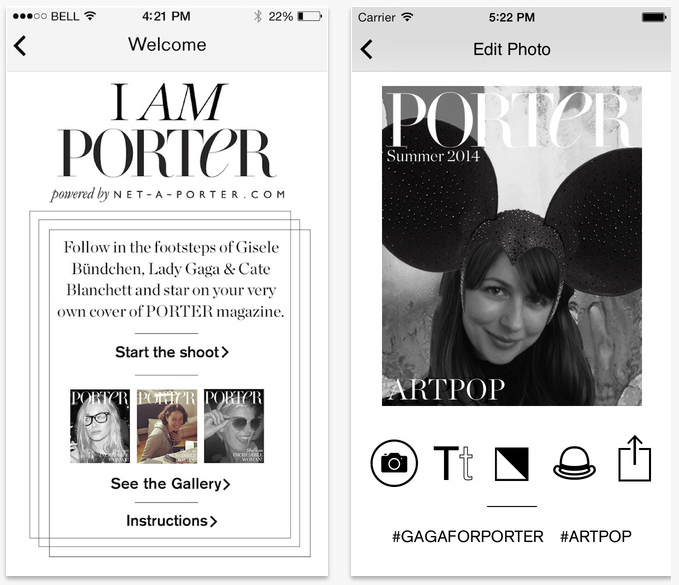
I AM PORTER
Looking for a better use of Instagram? Pay your attention to Nordstrom: this retailer turned its into an e-commerce site and got thousands of new customers. There are several software companies providing tools for social selling, so you can easily optimize current user experience of your online buyers.

Nordstrom
If you have no ideas how to raise awareness about your small e-commerce website, check the following example. Total Sports Enterprises gained lots of new visitors with the help of NFL star Hines Ward. Social Selling With Hines Ward campaign provided customers with the ability to buy products via Facebook with recommendations from the sportsman with a million-plus Facebook audience of fans. Such a good example of paid content advertising, isn’t it?

Total Sports Enterprises
Gelly Roll showed another example of successful social media utilization in e-commerce. Original gel pen maker combined two aspects of their buyers in order to create an SMM campaign: love of drawing and dependance on social networking services. Now you can see this love on Gelly Roll’s website and social media platforms. The company gets tons of new content and free advertising campaign within Facebook.

Gelly Roll
Real Time Social Experience with Periscope and Meerkat
and are two new social services designed for real time streaming. Both solutions can be utilized within any ecommerce business. Below we will tell about their features, explain core differences, and show how to use them in ecommerce.

Both Periscope and Meerkat produce live streams. This is their core common feature. Another aspect is an integration with Twitter, but in a case of Periscope sharing links to streams is optional, while Meerkat tweets all the content automatically. Thus, Periscope users can easily control the audience of viewers.
Another difference is in the availability of the recorded content after the stream is finished. Periscope keeps videos available within 24 hours after the end of every stream. Meerkat doesn’t provide any storing capabilities. This leads to broken user experience.

In addition, Periscope provides more tight integration with Twitter. Within this service, users get an access to people they follow on Twitter right within Periscope.
Periscope is currently used by such giants as Pepsi’s Mountain Dew, Spotify, and DKNY. Starbucks and MasterCard are among Meerkat’s prominent users. When it comes to the number of users, Periscope also holds the leading position. Despite Meerkat exists more it only reaches 0.1% of iOS users (in the US), while Periscope is used by 0.5%. In comparison, Twitter apps are installed and used on 19% of iOS devices. But why are Periscope and Meerkat important for the ecommerce?

Benefits for The Ecommerce Companies
Videos have always helped in becoming transparent with the customers, and live streams are even more important in this process. You can easily provide your target audience with the information about any latest offer or product by using social streaming services.
There is also an opportunity to show your business from inside. You already have lots of customers who are interested in this information. In addition, you can get new ones. Note, that live stream is your tool for establishing credibility among your customers. You can even stream live demos of your products, which can make your ecommerce business even more attractive.
Provide live lessons related to the products you sell, share some interesting facts, or offer any other engaging content to utilize the benefits of Periscope and Meerkat.

Examples of use
Place your customers at the center of flash sales
You can easily engage your customers with the help of Periscope or Meerkat by placing them at the center of a flash sale. You just need to start a live broadcast of the event and make customers communicate with you. This should look like a TV show: your customers are not only on your ecommerce website, but they’re live on the air with you.
Introduce your ecommerce business with the help of Q and A session
Chances are, that there are dozens of customers willing to ask questions about your business. Don’t send them to a FAQ section of your website – there is a better decision. You can gain their confidence with the help of Q and A session. You just have to start a live stream with the help of Periscope or Meerkat. Don’t be afraid to show yourself to your customers, be relatable, and you will push your ecommerce business to a new level.
Build product awareness and grow your sales
Ask your customers to add their real-life examples while you broadcast product information. This will not only help with building product awareness, but also will increase consumer confidence, and as a result sales.

Provide customer with better user experience
You can utilize live streaming within customer support. Thus, you will be able to provide help not only to a particular customer, but to the whole audience of your buyers.
Get real time feedbacks
Ask your buyers to leave feedbacks to your goods and services in real time. You can call them or even invite someone to the broadcasting event. If someone famous is using your products, you can ask this person to take part in the streaming.
Turn all your offline events into online ones
With the help of both Periscope and Meerkat, you can easily turn all your offline events into online ones. Chances are, you have customers, who are not able to take part in your future events, but you can offer them the live broadcasting.
Some Useful Tips
The following tips will help you to get more from using Periscope or Meerkat.
- First of all we recommend you not to forget about personalization. It means that you should greet every new viewer by nickname or name. Don’t be afraid to say a name every time you answer a question or address a user. Stay polite and make your customers feel good about themselves.
- Announce your live streams a few days before you go live. You should do this on all possible platforms. First of all, you can announce broadcast right on your website. We recommend you to use eye-catching banners. It is also important to inform your customers through all possible social networking services where your business is introduced. Generate buzz around the upcoming stream, and you will reach a wider audience.
- Never omit questions. It’s always better to say something like “no comment” than to ignore customers.
- While in a landscape mode, Periscope still displays messages from your customers in a portrait mode making the stream inconvenient for viewers. That’s why we recommend you to use a portrait mode only, while broadcasting with the help of this app.
- Both Meerkat and Periscope are tightly connected with Twitter. You should always remember this nuance while creating a broadcast title. Use the following hashtags to increase your findability on this social network: #periscope; #werelive; #livestream; #livebroadcast.
Conclusion
Keep in mind, that every SMM campaign is unique. Try to figure out all the particular proprietes of your e-commerce business in order to create the most effective social media strategy. You can rely on third-party social media companies, hire a social media marketer, or do everything with the help of existing specialists – it’s up to you, but core principles of successful campaign will always be the same.










